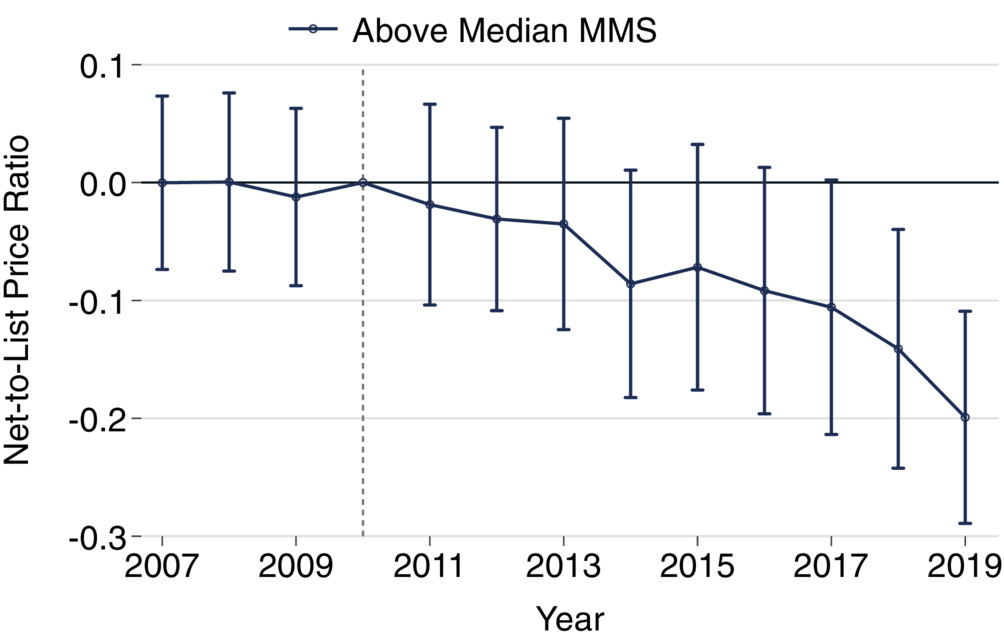Wes Thompson, administrator of Valley View Home in the northeastern Montana town of Glasgow, believes the only reasons his skilled nursing facility has avoided the fate of the 11 nursing homes that closed in the state last year are local tax levies and luck.
Valley County, with a population of just over 7,500, passed levies to support the nursing home amounting to an estimated $300,000 a year for three years, starting this year. And when the Hi-Line Retirement Center in neighboring Phillips County shut down last year as the covid-19 pandemic brought more stressors to the nursing home industry, Valley View Home took in some of its patients.
Related: Transitions to post-acute care are getting even more challenging
Thompson said he foresees more nursing home closures on the horizon as their financial struggles continue. But lawmakers are trying to reduce that risk through measures that would raise and set standards for the Medicaid reimbursement rates that nursing homes depend on for their operations.
A study commissioned by the last legislative session found that Medicaid providers in Montana were being reimbursed at rates much lower than the cost of care. In his two-year state budget proposal before lawmakers, Republican Gov. Greg Gianforte has proposed increases to the provider rates that fall short of the study’s recommendations.
Legislators drafting the state health department budget included rates higher than the governor’s proposal, but still not enough for nursing homes to cover the cost of providing care. Those rates are subject to change as the state budget bill goes through the months-long legislative process, though majority-Republican lawmakers so far have rejected Democratic lawmakers’ attempts for full funding.
In a separate effort to address the long-term care industry’s long-term viability, a bipartisan bill going through Montana’s legislature, Senate Bill 296, aims to revise how nursing homes and assisted living facilities are funded. The bill would direct health officials to consider inflation, cost-of-living adjustments, and the actual costs of services in setting Medicaid reimbursement rates.
SB 296, which received an initial hearing on Feb. 17, has generated conflicting opinions from experts in the long-term care field on whether it does enough to avoid nursing home closures.
Republican Sen. Becky Beard, the bill’s sponsor, said that although the bill comes too late for the nursing homes that have already closed, she sees it as shining a light on a problem that’s not going away.
“We need to stop the attrition,” Beard said.
Related: How post-acute care facilities use technology to save time, fight burnout
Sebastian Martinez Hickey, a research assistant at the Economic Policy Institute, a nonprofit think tank, said wages for nursing home employees had been extremely low even before the pandemic. He said the focus needs to be on raising Medicaid reimbursement rates beyond inflationary factors.
“Increasing Medicaid rates for inflation is going to have positive effects, but there’s no way that it’s going to compensate for what we’ve experienced in the last several years,” Martinez Hickey said.
Colorado, Illinois, Massachusetts, and North Carolina are among the states that have adopted laws or regulations to increase nursing home staff wages since the pandemic began. Michigan, North Carolina, and Ohio adopted increases or one-time bonuses.
In Maine, a 2020 study of long-term care workforce issues suggested that Medicaid rates should be high enough to support direct-care worker wages that amount to at least 125% of the minimum wage, which is $13.80 in that state. In combination with other goals outlined in the study, after a year there had been modest increases in residential care homes and beds, improved occupancy rates, and nods toward stabilization of the direct-care workforce.
Rose Hughes, executive director of the Montana Health Care Association, which lobbies on behalf of nursing homes and senior issues, said many of the problems plaguing senior care come down to reimbursement rates. There’s not enough money to hire staff, and, if there were, wages would still be too low to attract staff in a competitive marketplace, Hughes said.
“It’s trying to deal with systemic problems that exist in the system so that longer term the reimbursement system can be more stable,” Hughes said.
The governor’s office said Gianforte has been clear that Montana needs to raise its provider rates. For senior and long-term care, Gianforte’s proposed state budget would raise provider rates to 88% of the benchmark recommended by the state-commissioned study. Gianforte’s budget proposal is a starting point for lawmakers, and legislative budget writers have penciled in funding at about 90% of the benchmark rate.
“The governor continues to work with legislators and welcomes their input on his historic provider rate investment,” Gianforte spokesperson Kaitlin Price said.
Not a Modern Healthcare subscriber? Sign up today.
Democratic Rep. Mary Caferro is sponsoring a bill to fully fund the Medicaid provider rates in accordance with the study.
“What we really, really need is our bill to pass so that it brings providers current with ongoing funding for predictability and stability so they can do the good work of caring for people,” Caferro said at a Feb. 21 press briefing.
But Thompson said that even the reimbursement rate recommended by the study — $279 per patient, per day, compared with the current $208 rate — isn’t high enough to cover Valley View Home’s expenses. He said he’s going to have to have a “heart to heart” with the facility’s board to see what can be done to keep it open if the local tax levies in combination with the new rate aren’t enough to cover the cost of operations.
David Trost, CEO of St. John’s United, an assisted-living facility for seniors in Billings, said the current reimbursement rate is so low that St. John’s uses savings, grants, fundraising revenue, and other investments to make up the difference. He said that while SB 296 looks at factors to cover operating costs, it doesn’t account for other costs, such as repairs and renovations.
“In addition to paying for existing operating costs as desired by SB 296, we also need to look at funding of capital improvements through some loan mechanism to help nursing facilities make improvements to existing environments,” Trost said.
Another component of SB 296 seeks to boost assisted-living services by generating more federal funding.
Additional money could help reduce or eliminate the waiting list for assisted-living homes, which now stands at about 175 people, Hughes said. That waiting list not only signals that some seniors aren’t getting service, but it also results in more people being sent to nursing homes when they may not need that level of care.
SB 296 would also ensure that money appropriated to nursing homes can be used only for nursing homes, and not be available for other programs within the Department of Public Health and Human Services, like dentists, hospitals, or Medicaid expansion. According to Hughes, in 2021 the nursing home budget had a remainder of $29 million, which was transferred to different programs in the Senior and Long Term Care division.
If the funding safeguard in SB 296 had been in place at that time, Hughes said, there may have been more money to sustain the nursing homes that closed last year.
Keely Larson is the KHN fellow for the UM Legislative News Service, a partnership of the University of Montana School of Journalism, the Montana Newspaper Association, and Kaiser Health News. Larson is a graduate student in environmental and natural resources journalism at the University of Montana.
Kaiser Health News is a national health policy news service. It is an editorially independent program of the Henry J. Kaiser Family Foundation which is not affiliated with Kaiser Permanente.















